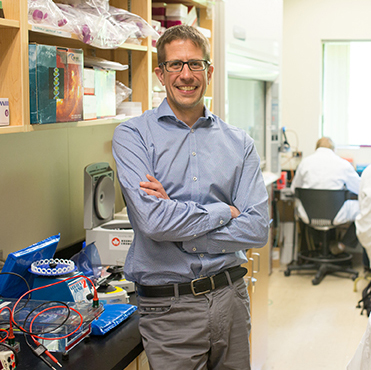
Thanks to newly funded federal research, if there is a COVID-19 outbreak in Kamloops, Thompson Rivers University (TRU) researchers should be able to spot it days early.
Supported by a Natural Sciences and Engineering Research Council (NSERC) Alliance Grant, and working with the City of Kamloops and engineers at Urban Systems, TRU microbiologists Dr. Jonathan Van Hamme and Dr. Eric Bottos are about to begin sampling the city’s sewage to monitor for the genetic material shed by the virus.
TRU-based genomics lab at the forefront
Van Hamme is the director of TRUGen, the first high-throughput genomic sequencing lab in BC outside of the Lower Mainland, and the tools at his disposal make this research project possible. By the end of July, Van Hamme’s research assistants will be collecting weekly samples from various wastewater collection sites in Kamloops. Those samples will be analyzed in his lab, where he will look for the ribonucleic acid (RNA) fragments from the virus that are shed in feces.
“We’re using the same technology that they use when testing the nasal swabs,” Van Hamme explained.
Testing sewage to track disease is not new — scientists in several countries have been monitoring sewage for other diseases, including polio, for years. However, testing for the genetic material shed by carriers of SARS-CoV-2—the virus that causes COVID-19—is new, specifically in the Canadian context.
With a growing network of cities beginning to test wastewater for signs of the virus, scientists are developing standard methodologies and protocols, including determining the lowest levels of genetic material that can be traced, and even deciding when to sample.
“Because people shed it in their feces, we have to figure out what time most people go to the bathroom,” he said.
“We have a lot of questions. Even if you detect RNA in the sewage, what does that mean? You can’t directly correlate it to how many people in a population are ill, because they may be asymptomatic spreaders. It’s a good way to monitor entire populations, cost effectively.”
Pinpointing outbreaks
By sampling weekly and developing a good baseline, Van Hamme expects this research will spot the genetic material as much as six days before an outbreak.
“The City of Kamloops has been a great partner. They are giving us access to the treatment plant and we should be able to sample from different collection points. So, theoretically, we can sample outside of a school or even a long-term-care facility,” he said.
“If an outbreak starts, or cases start to go up, we should be able to spot it,” he added, noting that this testing wouldn’t account for anomalies, including a bus of tourists passing through the city.
While Van Hamme wanted to begin sampling sooner, he held off on buying materials needed for the research as he did not want to remove equipment necessary for human testing from the supply chain. Now, however, supply chains have stabilized, and he is excited to begin.
More information
Dr. Jonathan Van Hamme, Professor
jvanhamme@tru.ca

